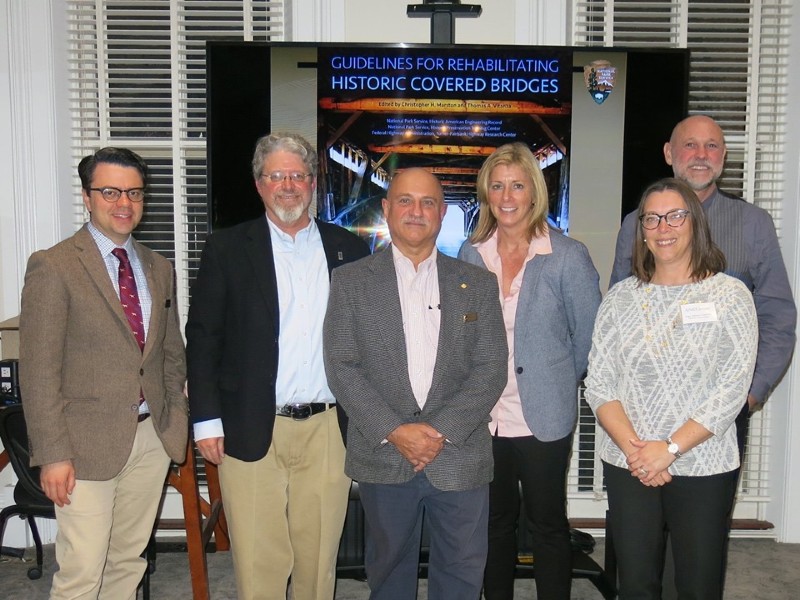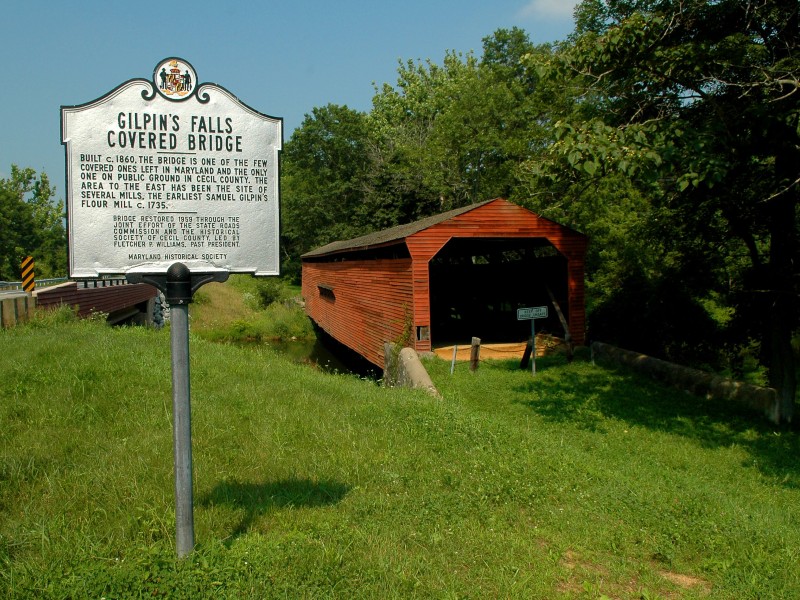Late in 2019, the Historic American Engineering Record celebrated the release of new rehabilitation guidelines for covered bridges at a reception at the Historic Preservation Training Center in Frederick, Maryland.
The well-illustrated publication of over 230 pages includes an introduction to the unique architectural typology of covered bridges with the most commonly found character-defining features as well as regional variations found across America. A map of extant historic covered bridges shows that the primary locations in the North East, Mid-Atlantic, with some clusters in the Mid-West and the coastal areas of Oregon. There are eleven case studies for reference including a detailed analysis of Gilpin’s Falls Covered Bridge in Cecil County, Maryland. The goal of the free document is to be a useful resource for educating engineers, State Historic Preservation Officers (SHPOs), Departments of Transportation (DOTs), bridge owners, preservationists, and residents in maintaining these historic symbols of American engineering for future generations.

At the reception, Nicholas Redding, Christoper Marsom, Tom Vitanza, Joy Beasley, Aimee Jorjani, Dana Lockett, December 2019.
In attendance at the December 2019 reception in Frederick, Maryland, was Chairwoman of the Advisory Council for Historic Preservation, Aimee Jorjani, along with editors, Christopher H. Marston and Thomas A. Vitanza. Christopher H. Marston is a HAER Architect and was previously an editor of Covered Bridges and the Birth of American Engineering in 2015 and he is an active member of Preserving the Historic Road. Thomas A. Vitanza is a Senior Historical Architect at the National Park Service’s Historic Preservation Training Center based in Frederick, Maryland. Preservation Maryland helped host the reception with Executive Director, Nicholas Redding, and Workforce Development Manager, Jermaine Peterson in attendance.
ACcess the Guidelines Document
List of Covered Bridges in Maryland

